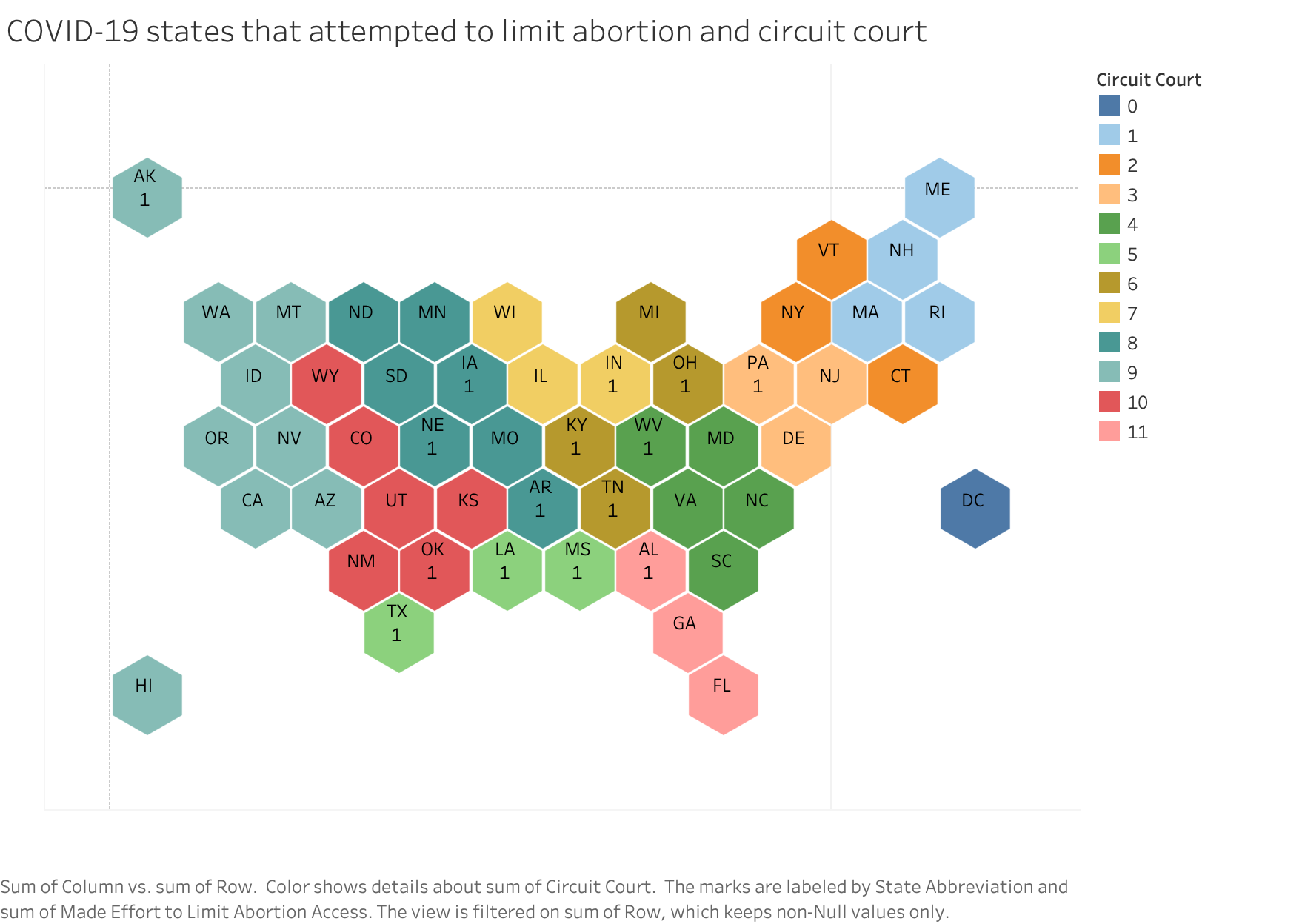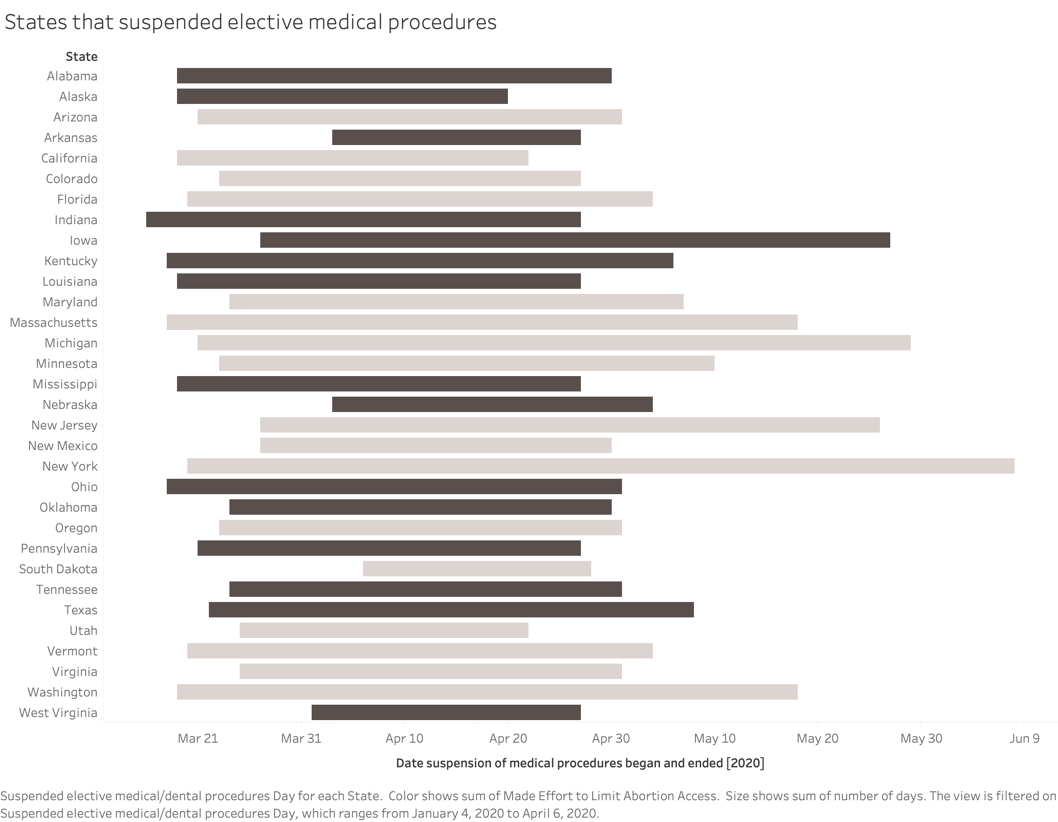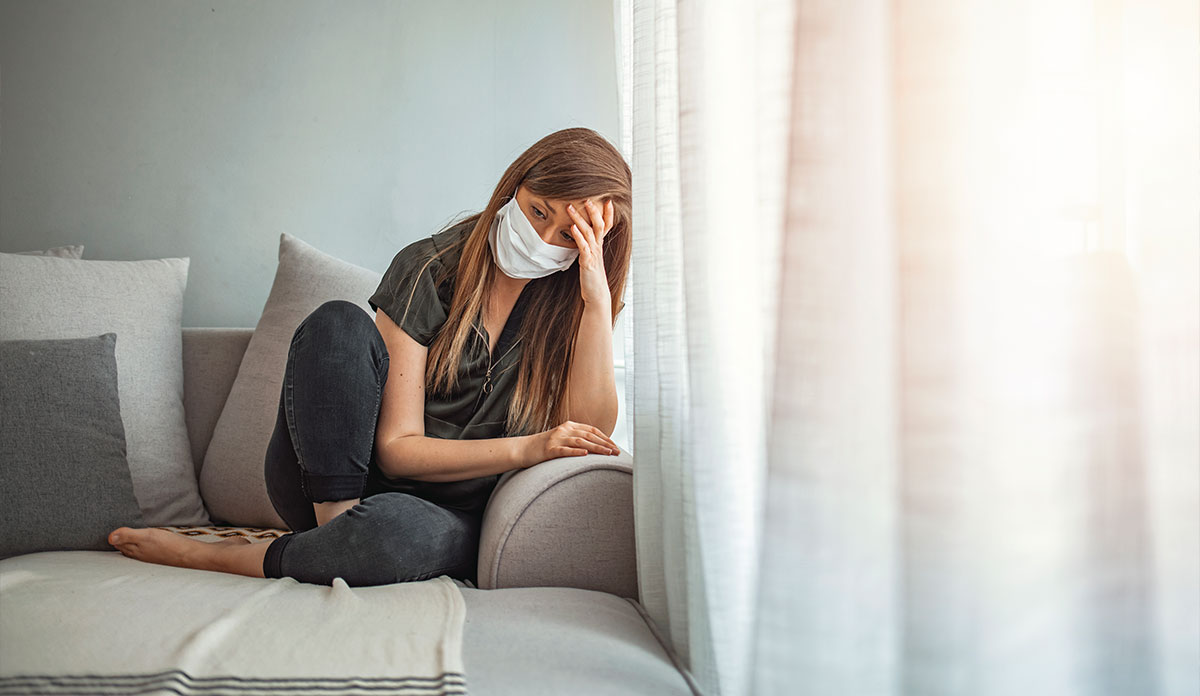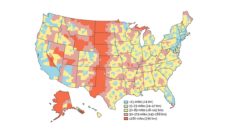In March and April of 2020, as Covid-19 spread across the US, state governors issued executive orders closing restaurants, gyms, and other places of congregation. They feared that hospitals would run out of personal protective equipment (PPE) if patient volume surged. Thirty-three states suspended elective medical procedures to preserve PPE and hospital capacity, and 15 made some effort through executive order or legislative action to prevent timely abortions. Many of these states classified abortion procedures as a non-essential use of PPE that would threaten public health.

Map created by Rachel Scheckman using collected data from Raifman, J., Kristen, N., Jones, D., Bor, J., Lipson, S., Jay, J., & Chan, P. (2020). Covid-19 US State Policy Database. www.tinyurl.com/statepolicies. The image shows the states in each Circuit Court jurisdiction. States marked with a 1 are states that implemented or tried to pass abortion bans as part of their executive orders or through legislation.
Federal Courts of Appeal for the Fifth, Sixth, Eighth, and Eleventh Circuit heard challenges to orders that halted abortions (see map). The Fifth and Eighth Circuits allowed the moratoriums on abortion to continue, citing a 1905 US Supreme Court case, Jacobson v. Massachusetts, as precedent. Jacobson held that, during a smallpox epidemic, a Massachusetts law requiring healthy adults to receive mandatory smallpox vaccination or pay a $5 fine did not violate a person’s liberty to refuse medical treatment. The Fifth and Eight Circuits interpreted this to mean that, in an emergency, the state could override almost any constitutional right if it claimed doing so would protect public health. The Sixth Circuit disagreed and signaled that it would dismiss arguments based on Jacobson.
During the first wave of Covid-19 shutdowns, the longest moratorium on elective procedures among states that tried to restrict access to abortion was 8.7 weeks. In the states where abortion restrictions existed, the average moratorium lasted 5.6 weeks (see chart). Even supposedly brief closures can make it difficult to obtain care.

This Gantt chart shows the start date and length of elective medical procedure suspensions by state. The darker colored bars are states which attempted to block access to abortions through legislation or executive order. Rules did not go into effect in all of these states. It does not show the specific start and end dates for the abortion moratoriums. This chart was made by Rachel Scheckman using data from Raifman, J., Kristen, N., Jones, D., Bor, J., Lipson, S., Jay, J., & Chan, P. (2020). Covid-19 US State Policy Database. www.tinyurl.com/statepolicies.
Pregnancy can take seven days to two weeks to be detectable by over-the-counter pregnancy tests. Pregnancy may not be detected for over four weeks. Appointments are hard to get in states with few clinics. Patients face additional delays in states requiring waiting periods and multiple visits. Medication abortions are not recommended after 10 weeks. In states like Texas and Tennessee, which ban abortion after 22 weeks, these delays can make access to abortion impossible.
During the first shut down in Texas, Aid Access, a telemedicine provider that mails the abortion pill to patients, noted a 94% increase in requests from Texas. This option is only good up to 11 weeks. Texas and Tennessee both ban medication abortions after 10 weeks. With a moratorium in place, a person would have to travel to a clinic out of state. Traveling during the epidemic, however, risks exposure to Covid, which is what the moratoriums sought to prevent.
With a moratorium in place, a person would have to travel to a clinic out of state. Traveling during the epidemic, however, risks exposure to Covid, which is what the moratoriums sought to prevent.
On January 25, 2021, the Supreme Court vacated both the Fifth and Sixth Circuit Court decisions without deciding on the merits of their interpretations of Jacobson. However, the Fifth Circuit’s interpretation of Jacobson has already influenced other courts. These decisions ignore 115 years of case law defining the limits of state police powers when regulating important constitutional rights.
Another recent Supreme Court decision has made medicated abortions harder to access by reinstating a federal regulation that prevents mail delivery of the abortion pill. This decision, combined with the potential for new moratoriums restricting access to in-person visits to abortion providers, could jeopardize the wellbeing of people across the country. It is also likely that, if orders halting elective procedures go back into effect, abortion access could find its way back into the courts before a conservative Supreme Court. Executive orders that close essential services and jeopardize health should not be justified by misinterpretations of Supreme Court decisions.
Photo via Getty Images














